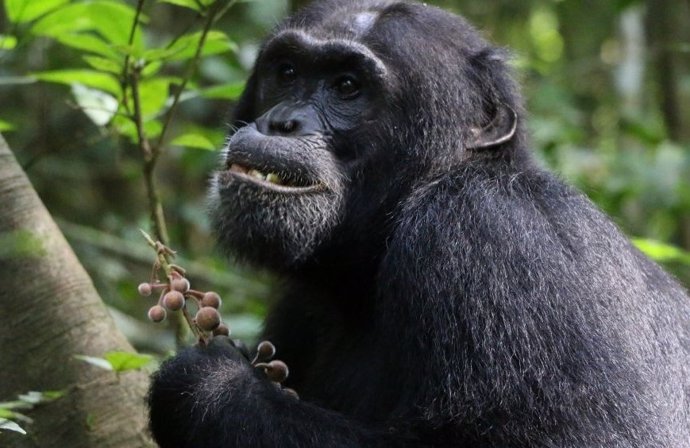Chimpanzee – OXFORD UNIVERSITY
June 21. () –
Chimpanzees appear to consume plants with medicinal properties to treat their ailments, according to a new study led by the University of Oxford and published in PLOS ONE.
Many plants produce compounds that have medicinal effects on humans and other animals. Wild chimpanzees eat several different plants, including some that are nutritionally poor but can treat or alleviate the symptoms of the disease. However, until now it has been difficult to determine whether chimpanzees self-medicate, intentionally seeking out plants with properties that help your specific ailmentsor passively consume plants that happen to be medicinal.
To investigate this, a team of researchers combined behavioral observations of wild chimpanzees (Pan troglodytes) with pharmacological tests of the potentially medicinal plants they eat. They monitored the behavior and health of 51 chimpanzees from two communities in the Central Budongo Forest Reserve in Ugandawho were accustomed to the presence of humans.
Next, they collected plant extracts from 13 species of trees and herbs in the reserve that they suspected the chimpanzees might be using to self-medicate. These included plants that sick or injured chimpanzees were observed eating, but that were not part of their normal diet, and plants that previous research had suggested that chimpanzees might consume it for its medicinal properties.
The extracts were then analyzed for their anti-inflammatory and antibiotic properties at the Neubrandenburg University of Applied Sciences, led by Dr. Fabien Schultz.
The researchers discovered that 88% of the plant extracts inhibited bacterial growth, while 33% had anti-inflammatory properties. Dead wood from a tree in the oleander family (Alstonia boonei) showed the strongest antibacterial activity and also had anti-inflammatory properties, suggesting that chimpanzees could consume it to treat wounds. Interestingly, Alstonia boonei is also used as a medicinal plant in East African communities to treat various conditions, including bacterial infections, gastrointestinal problems, snake bites and asthma.
The bark and resin of the East African mahogany tree (Khaya anthotheca) and the leaves of a fern (Christella parasitica) showed potent anti-inflammatory effects. The researchers observed a male chimpanzee with an injured hand searching for and eating fern leaves, which may have helped reduce pain and swelling. They also recorded an individual with a parasitic infection consuming bark from the catthorn tree (Scutia myrtina), which chimpanzees in this group had never before been observed eating. Tests revealed that this bark had both anti-inflammatory and antimicrobial properties.
The results provide compelling evidence that chimpanzees seek out specific plants for their medicinal effects. The study is the most in-depth analysis to date combining pharmacological and behavioral evidence of the medicinal benefits to wild chimpanzees of feeding on bark and dead wood.
Lead author Dr Elodie Freymann, from the School of Museum Anthropology and Ethnography at the University of Oxford, said it’s a statement: “To study self-medication in wild chimpanzees you have to act like a detective, gathering multidisciplinary evidence to piece together a case. After spending months in the field collecting behavioral clues that led us to specific plant species, it was exciting to analyze the pharmacological results and discovering that many of these plants exhibited high levels of bioactivity.”
With both antibiotic-resistant bacteria and chronic inflammatory diseases becoming urgent challenges to global health, researchers note that medicinal plants growing in the Central Budongo Forest Reserve could help in the development of valuable new medicines.






![[Img #74661]](https://thelatestnews.world/wp-content/uploads/2024/12/The-power-of-ultrasound-150x150.jpg)






![[Img #74661]](https://thelatestnews.world/wp-content/uploads/2024/12/The-power-of-ultrasound-300x200.jpg)


Add Comment